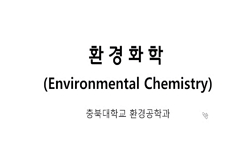The complexation of boric acid (B(OH)3), the primary form of aqueous boron at moderate pH, with polyols is proposed and mechanistically studied as an efficient way to improve membrane processes such as reverse osmosis (RO) for removing boron in seawat...
http://chineseinput.net/에서 pinyin(병음)방식으로 중국어를 변환할 수 있습니다.
변환된 중국어를 복사하여 사용하시면 됩니다.
- 中文 을 입력하시려면 zhongwen을 입력하시고 space를누르시면됩니다.
- 北京 을 입력하시려면 beijing을 입력하시고 space를 누르시면 됩니다.



Simple boron removal from seawater by using polyols as complexing agents: A computational mechanistic study
한글로보기https://www.riss.kr/link?id=A104438248
-
저자
Min-Kyung Kim (Pukyong National University) ; Ki Heon Eom (Pukyong National University) ; 임준혁 (부경대학교) ; Jea-Keun Lee (Pukyong National University) ; Ju Dong Lee (Pukyong National University) ; 원용선 (부경대학교)
- 발행기관
- 학술지명
- 권호사항
-
발행연도
2015
-
작성언어
English
- 주제어
-
등재정보
KCI등재,SCIE,SCOPUS
-
자료형태
학술저널
- 발행기관 URL
-
수록면
2330-2334(5쪽)
-
KCI 피인용횟수
3
- DOI식별코드
- 제공처
-
0
상세조회 -
0
다운로드
부가정보
다국어 초록 (Multilingual Abstract)
The complexation of boric acid (B(OH)3), the primary form of aqueous boron at moderate pH, with polyols is proposed and mechanistically studied as an efficient way to improve membrane processes such as reverse osmosis (RO) for removing boron in seawater by increasing the size of aqueous boron compounds. Computational chemistry based on the density functional theory (DFT) was used to manifest the reaction pathways of the complexation of B(OH)3 with various polyols such as glycerol, xylitol, and mannitol. The reaction energies were calculated as −80.6, −98.1, and −87.2 kcal/mol for glycerol, xylitol, and mannitol, respectively, indicating that xylitol is the most thermodynamically favorable for the complexation with B(OH)3. Moreover, the 1 : 2 molar ratio of B(OH)3 to polyol was found to be more favorable than the ratio of 1 : 1 for the complexation. Meanwhile, latest lab-scale actual RO experiments successfully supported our computational prediction that 2 moles of xylitol are the most effective as the complexing agent for 1 mole of B(OH)3 in aqueous solution.
참고문헌 (Reference)
1 K. Le. Tu, 75 (75): 87-, 2010
2 B. S. Park, 2014
3 A. D. Khawaji, 221 : 47-, 2008
4 K. P. Lee, 370 : 1-, 2011
5 J. Redondo, 156 : 229-, 2003
6 A. Sagiv, 243 : 79-, 2004
7 H. I. Shaban, 19 : 121-, 1990
8 G. Jeong, 47 : 225-, 2014
9 J. Tomasi, 105 : 2999-, 2005
10 P. Glueckstern, 156 : 219-, 2003
1 K. Le. Tu, 75 (75): 87-, 2010
2 B. S. Park, 2014
3 A. D. Khawaji, 221 : 47-, 2008
4 K. P. Lee, 370 : 1-, 2011
5 J. Redondo, 156 : 229-, 2003
6 A. Sagiv, 243 : 79-, 2004
7 H. I. Shaban, 19 : 121-, 1990
8 G. Jeong, 47 : 225-, 2014
9 J. Tomasi, 105 : 2999-, 2005
10 P. Glueckstern, 156 : 219-, 2003
11 L. F. Greenlee, 43 : 2317-, 2009
12 N. Geffen, 286 : 45-, 2006
13 P. Dydo, 89 : 171-, 2012
14 S. Chapelle, 44 : 4469-, 1988
15 N. Kabay, 223 : 38-, 2008
16 C. L. Mehltretter, 3 : 145-, 1964
17 S. Yasuda, 4 : 752-, 1987
18 Gaussian 09W, Gaussian, Inc 2004
19 S. Grimme, 27 : 1787-, 2006
20 A. D. Becke, 98 : 5648-, 1993
21 R. Ditchfield, 54 : 724-, 1971
22 X. Li, 2 : 835-, 2006
23 M. S. Rayson, 114 : 2597-, 2010
24 WHO, "Guidelines for Drinking Water Quality"
25 원용선, "Exploration for the potential precursors for zirconium carbide atomic layer deposition via comprehensive computational mechanistic study of the gas phase decomposition of neopentyl zirconium derivatives" 한국화학공학회 31 (31): 2077-2080, 2014
26 원용선, "Computational study on the decomposition of tetraneopentyl zirconium for the chemical vapor deposition of zirconium carbide" 한국화학공학회 29 (29): 1438-1443, 2012
동일학술지(권/호) 다른 논문
-
Biodiesel production from palm oil using a non-catalyzed supercritical process
- 한국화학공학회
- 박석환
- 2015
- KCI등재,SCIE,SCOPUS
-
Propane combustion over Pt/Al2O3 catalysts with different crystalline structures of alumina
- 한국화학공학회
- 박정은
- 2015
- KCI등재,SCIE,SCOPUS
-
- 한국화학공학회
- Nima Nabian
- 2015
- KCI등재,SCIE,SCOPUS
-
Effect of combined slow pyrolysis and steam gasification of sugarcane bagasse on hydrogen generation
- 한국화학공학회
- Prakash Parthasarathy
- 2015
- KCI등재,SCIE,SCOPUS
분석정보
인용정보 인용지수 설명보기
학술지 이력
| 연월일 | 이력구분 | 이력상세 | 등재구분 |
|---|---|---|---|
| 2023 | 평가예정 | 해외DB학술지평가 신청대상 (해외등재 학술지 평가) | |
| 2020-01-01 | 평가 | 등재학술지 유지 (해외등재 학술지 평가) |  |
| 2016-06-21 | 학술지명변경 | 한글명 : The Korean Journal of Chemical Engineering -> Korean Journal of Chemical Engineering외국어명 : The Korean Journal of Chemical Engineering -> Korean Journal of Chemical Engineering |  |
| 2011-01-01 | 평가 | 등재학술지 유지 (등재유지) |  |
| 2009-01-01 | 평가 | 등재학술지 유지 (등재유지) |  |
| 2007-09-27 | 학회명변경 | 영문명 : The Korean Institute Of Chemical Engineers -> The Korean Institute of Chemical Engineers |  |
| 2007-09-03 | 학술지명변경 | 한글명 : The Korean Journal of Chemical Engineeri -> The Korean Journal of Chemical Engineering외국어명 : The Korean Journal of Chemical Engineeri -> The Korean Journal of Chemical Engineering |  |
| 2007-01-01 | 평가 | 등재학술지 유지 (등재유지) |  |
| 2005-01-01 | 평가 | 등재학술지 유지 (등재유지) |  |
| 2002-01-01 | 평가 | 등재학술지 선정 (등재후보2차) |  |
| 1999-07-01 | 평가 | 등재후보학술지 선정 (신규평가) |  |
학술지 인용정보
| 기준연도 | WOS-KCI 통합IF(2년) | KCIF(2년) | KCIF(3년) |
|---|---|---|---|
| 2016 | 1.92 | 0.72 | 1.4 |
| KCIF(4년) | KCIF(5년) | 중심성지수(3년) | 즉시성지수 |
| 1.15 | 0.94 | 0.403 | 0.14 |




 ScienceON
ScienceON



